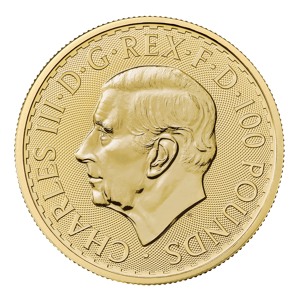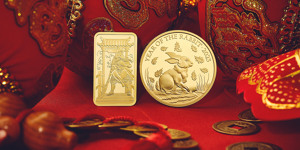Tavex uses cookies to ensure website functionality and improve your user experience. Collecting data from cookies helps us provide the best experience for you, keeps your account secure and allows us to personalise advert content. You can find out more in our cookie policy.
Please select what cookies you allow us to use
Cookies are small files of letters and digits downloaded and saved on your computer or another device (for instance, a mobile phone, a tablet) and saved in your browser while you visit a website. They can be used to track the pages you visit on the website, save the information you enter or remember your preferences such as language settings as long as you’re browsing the website.
| Cookie name | Cookie description | Cookie duration |
|---|---|---|
| tavex_cookie_consent | Stores cookie consent options selected | 60 weeks |
| tavex_customer | Tavex customer ID | 30 days |
| wp-wpml_current_language | Stores selected language | 1 day |
| AWSALB | AWS ALB sticky session cookie | 6 days |
| AWSALBCORS | AWS ALB sticky session cookie | 6 days |
| NO_CACHE | Used to disable page caching | 1 day |
| PHPSESSID | Identifier for PHP session | Session |
| latest_news | Helps to keep notifications relevant by storing the latest news shown | 29 days |
| latest_news_flash | Helps to keep notifications relevant by storing the latest news shown | 29 days |
| tavex_recently_viewed_products | List of recently viewed products | 1 day |
| tavex_compare_amount | Number of items in product comparison view | 1 day |
| Cookie name | Cookie description | Cookie duration |
|---|---|---|
| chart-widget-tab-*-*-* | Remembers last chart options (i.e currency, time period, etc) | 29 days |
| archive_layout | Stores selected product layout on category pages | 1 day |
| Cookie name | Cookie description | Cookie duration |
|---|---|---|
| cartstack.com-* | Used for tracking abandoned shopping carts | 1 year |
| _omappvp | Used by OptinMonster for determining new vs. returning visitors. Expires in 11 years | 11 years |
| _omappvs | Used by OptinMonster for determining when a new visitor becomes a returning visitor | Session |
| om* | Used by OptinMonster to track interactions with campaigns | Persistent |
| Cookie name | Cookie description | Cookie duration |
|---|---|---|
| _ga | Used to distinguish users | 2 years |
| _gid | Used to distinguish users | 24 hours |
| _ga_* | Used to persist session state | 2 years |
| _gac_* | Contains campaign related information | 90 days |
| _gat_gtag_* | Used to throttle request rate | 1 minute |
| _fbc | Facebook advertisement cookie | 2 years |
| _fbp | Facebook cookie for distinguishing unique users | 2 years |

Investors and central banks in the East are purchasing gold in large quantities, leading to a historic shift as gold increasingly flows from the West to the East. China and other Asian nations are transforming the dynamics of the gold market.
In contrast, European and US central banks and investors have remained largely inactive in the gold market, even as the precious metal reaches record-high prices. Meanwhile, the East is experiencing a significant gold boom, with substantial purchases of coins, bullion, and jewellery.
China stands out prominently in the gold market, with its central bank actively purchasing gold since 2022 while simultaneously divesting from dollar-related assets, primarily US government bonds. This trend highlights a clear intent in the East to reduce reliance on the dollar-based monetary system.
As a result, the dynamics of the gold market have been completely transformed. The old rules no longer apply, and China, along with the rest of Asia, has emerged as a key player, setting new standards and reshaping the market.
The Previous Rules No Longer Apply

In the past, the gold market was heavily influenced by Western investors and exchange-traded funds (ETFs). Typically, when there was an outflow from ETFs, the price of gold would come under pressure. Similarly, a stronger dollar and rising real yields on government bonds would also put downward pressure on gold prices.
However, in recent years, the gold market has defied these traditional factors, with prices rising rapidly.
Despite outflows from ETFs, Chinese and other Asian investors have been actively purchasing physical gold
Even as the dollar strengthens and real bond yields increase, prompting many Western investors to sell their gold, Asian investors are eager to buy it. Moreover, they are willing to pay higher prices for it.
All of this indicates a significant shift in the dynamics of the gold market, with Asia exerting an increasing influence. Should Western investors align with these trends – potentially triggered by rising inflation – we could witness an even more rapid appreciation of gold prices.
China Accounts For an Increasing Share of Demand

Examining global demand for physical gold reveals that China’s central bank gold reserve share – encompassing the country, its investors, and consumers – has grown significantly in recent years.
In the first quarter of 2024, demand for gold coins and bars in Europe dropped by 53 percent compared to the previous year. In contrast, China saw a 67 percent increase in the same period. This trend mirrors the pattern observed last year, indicating that an increasing proportion of the world’s gold is being purchased by the Chinese.
This shows how the deterioration of the European economy and the crisis of survival resulting from the rise in energy prices. This has scared local investors away from the market.
At the same time, however, the Chinese government is encouraging its citizens to buy precious metals. The crisis in the Chinese real estate market also plays a big role, which has forced the Chinese to look for alternative ways to invest. Gold has become an increasingly important asset in their portfolios.
Despite gold prices hitting new records, demand for jewellery remains strong in Asia. In the first quarter of this year, the demand for gold jewellery in China decreased by 5 percent compared to the same time last year, but remained very high when looking at historical levels.
China’s Central Bank Dominates the Gold market

Gold purchases by central banks have been record high in recent years, and China plays a key role there as well. The central bank of the country has already announced an increase in its gold reserves for 18 months in a row. Although official gold reserves have risen to nearly 2,300 tons, China probably has much more gold than they officially report.
Read more on the topic here: China’s record demand is driving the market this year
Official reserves reached 2,264 tons by the end of April, accounting for 4.9 percent of all central bank reserves.
Since 2022, China’s gold reserves have increased by a total of 314 tons
However, these are official numbers. If we compare the share of gold in China’s reserves (only 4.9 percent) with, for example, the United States, the United States has a corresponding figure of 71.3 percent. China also has arguably the world’s largest foreign currency reserves (including gold), over the Bank of England and the Federal Reserve.
Since the Chinese culturally have a very strong belief in gold, it is hard to believe that only 5 percent of their country’s reserves are gold.
China Probably Has Lots More Gold

It is quite likely that China has thousands of tons more gold. There are several different reasons for this. For central bank purchases, the World Gold Council (WGC) can only identify the half that actually buys gold. China is believed to be secretly buying much more gold than they are reporting.
For example, in 2022, the CEO of Barrck Gold, the world’s second largest gold bullion producer, Mark Bristow told the Financial Times that in the third quarter of 2022 alone, China’s central bank bought nearly 300 tons of gold.
His assessment was based on communication with several different sources. China’s official gold reserves were unchanged in the quarter. In total, central banks bought 458.8 tons of gold in that quarter, which was an absolute historical record. So it is very likely that China is actually behind much of the undercover shopping.
It is very difficult to estimate exactly what China’s actual gold reserves are
According to various estimates, they can reach 4,000-20,000 tonnes of gold. This means that China’s gold reserves are probably comparable to those of the USA (US reserves reach about 8100 tons).
China is Giving Up on US Bonds

At the same time, China is selling record amounts of US Treasuries. This has been a trend for some time, with the Chinese cutting US Treasuries in half over a decade or so. This is a clear sign that China wants to reduce its dependence on the dollar. The same trend can be observed in several other Asian countries.
This trend accelerated after the war in Ukraine, which began in 2022, when Western countries decided to impose wide-ranging sanctions on Russia, including the financial system. Presumably, both China and several other Asian countries fear that if they take the wrong step, their assets or access to the financial system based on the dollar and the euro could also be hit, hence their gold investments.
However, this may not be the only reason why bonds are sold. Presumably, it is understood in China that the national debt of the United States has become too large, and that it will be more and more difficult to service the rising interests. However, the ever-increasing supply puts downward pressure on bond prices.
Also, China’s domestic economy has grown strongly over the past few decades, and its dependence on exports is decreasing. In the first three months of the year, China sold a total of $53.3 billion worth of US government bonds and agency bonds.
Agency bonds are bonds issued by or funded by agencies of the US government
Chinese investments are under increased attention of investors and market participants in the context of geopolitical tensions and West-East polarisation. US President Joe Biden recently made public a number of tariffs he wants to impose on Chinese goods. Former President Donald Trump had said that if he becomes president again, he may impose tariffs of up to 60 percent on Chinese goods.
Interestingly, China is selling US debt at a time when markets are expecting interest rate cuts from the Federal Reserve this year. Interest rate cuts tend to have a positive effect on bond prices in the short term.
Other countries with which China has stronger political and economic ties have also significantly increased the amount of gold in their gold reserves in recent years.

















